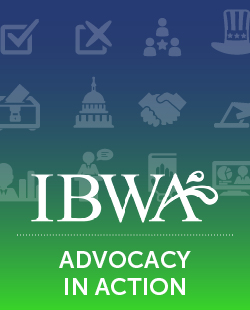Recycling
Recycling

All bottled water containers are made to be recycled.
The packaging used to bottle water – whether plastic or glass – is 100 percent recyclable. Empty bottled water containers (including the caps) should always be placed in a recycle bin. By collecting these bottles and reusing the plastic to make new containers from old ones, less virgin plastic is needed in the marketplace. This concept is part of what makes a circular economy: minimizing waste and making the most of existing resources.
Recycling rate
At 33 percent, the recycling rate for single-serve PET plastic bottled water containers has doubled in the last 10 years. Bottled water bottles are the most frequently recycled PET beverage containers in curbside recycling programs, according to the National Association for PET Container Resources (NAPCOR). In fact, bottled water containers make up nearly 49 percent of the PET plastic collected in curbside systems; for comparison, soft drink PET bottles make up only 15 percent. In addition, 3- and 5-gallon plastic bottled water containers are reused between 30-50 times before being recycled.
Light-weighting
The bottled water industry has made significant inroads in reducing the amount of plastic used to make bottled water containers by light-weighting its packaging. Between 2000 and 2014, the average weight of a 16.9-ounce PET (half-liter) plastic bottle declined 51 percent, to 9.25 grams. The light-weighting of bottled water PET containers resulted in a savings of 6.2 billion pounds of PET resin during that time period.
Use of recycled materials
Other innovative ways to improve recycling includes expanding the use of recycled PET (rPET) and exploring new compostable and bio-degradable plastics. Many bottled water companies are already using up to 50 percent recycled material in their plastic bottles.
Plastic bottles have made it convenient for people to enjoy refreshing, cold bottled water at and away from home. Using PET plastic to package beverages has made drinks more light-weight and easier to transport than cans. In addition, it also requires less energy to produce PET containers than cans or glass.
Did you know?
- Data derived from EPA figures demonstrates that plastic water bottles make up less than one-third of
1 percent of the U.S. waste stream. - PET plastics are 100 percent recyclable.
- More than 90 percent of U.S. households have access to curbside and drop-off recycling programs.
- Of all the plastics produced in the United States, PET plastic bottled water packaging makes up only 0.92 percent — less than 1 percent.
- Producing new products from rPET uses two-thirds less energy than required to make products from raw virgin materials. It also reduces greenhouse gas emissions.
- Recycled plastic bottles can be made into new bottles or items such as plastic lumber for outdoor decking, playground equipment, carpeting, clothing, and car parts.
- Recycling a single plastic bottle can conserve enough energy to light a 60-watt light bulb for up to six hours.
How PET containers are recycled
Source: NAPCOR on Vimeo.
To learn more about PET, please visit the National Association for PET Container Resources (NAPCOR).
Click Here to learn about IBWA’s Material Recovery Program.





